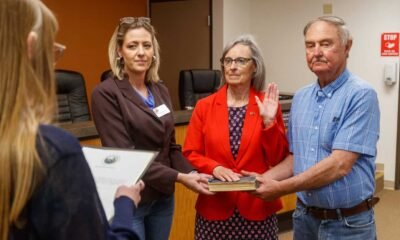Business
Winter Olympics 2026: Creating Authentic Olympic Atmosphere Becomes a ‘Real Challenge’

The Winter Games will return to a mountain snow location in 2026, but establishing the Olympic atmosphere may present an obstacle.
PARIS, France — It’s akin to securing tickets for an aging rock band, hoping their elderly performers stay healthy for the show.
This time, however, the venue might shift from Italy to New York.
As tickets go on sale for the next Olympics, uncertainty looms over one major Winter Games venue’s readiness.
Milan-Cortina organizers are under pressure to build a contested sliding center in Cortina while keeping backup options open in Austria (Igls), Switzerland (St. Moritz), and New York (Lake Placid).
Hospitality packages, including bobsled, luge, and skeleton competitions, will be available in November. General ticket sales begin in February, but certainty about the Cortina sliding center’s completion will not come until March.
European ticket purchasers might face the prospect of booking transatlantic flights if the venue shifts to Lake Placid, while Americans may find their events relocated closer to home after booking flights to Italy.
“Practically,” stated Andrea Varnier, Milan-Cortina’s CEO, in an interview with The Associated Press.
He added, “We’re currently planning for Cortina, but as autumn begins, we’ll have better clarity. By February, we hope to confirm it will be in Cortina.”
The local organizing committee’s decision to reconstruct the century-old Cortina track has clashed with the IOC’s preference for Igls or St. Moritz.
The Italian government, unwilling to fund a foreign venue, agreed to rebuild the Cortina track for 81.6 million euros ($88 million). Construction started with less than two years before the 2026 Games.
No modern sliding track has ever been built this swiftly.
Varnier was optimistic following positive feedback from an IOC and international federation technician visit to Cortina.
“The feedback was quite positive,” Varnier said. “So I’m optimistic now that the sliding center will happen in Cortina.”
However, Cortina will not host test events for the sliding or ice hockey, typically held the season before the Games.
Both test events, crucial for athlete safety, have been postponed to late 2025, mere months before the Games commence on Feb. 6, 2026.
Kristina Kloster, the IOC’s coordination commission chair for Milan-Cortina, emphasized athlete safety over timelines. “Timelines are tight and athlete safety will not be compromised through any delays,” she said.
The 2026 Games will span a vast area of northern Italy, with events spread across five venue clusters.
Transport solutions for spectators traveling from Milan to Cortina, Bormio, Livigno, Val di Fiemme, and Anterselva are being coordinated with state railway and local authorities.
Organizers are counting on spectators staying loyal to their preferred sports and venues.
Varnier explained, “Fans of one sport rarely overlap with others. Biathlon fans, for example, might not be interested in figure skating.”
Creating a cohesive Olympic atmosphere across the dispersed venues remains a significant challenge.
Milan-Cortina embraces IOC President Thomas Bach’s cost-cutting reforms, utilizing existing venues and spreading the Games across a wide area. The risk is that each sport may resemble an independent world championship rather than a centralized Olympics event.
Varnier acknowledged, “That’s our real challenge. We’ve seen the energy in Paris, and now we aim to replicate that in our own territories.”
The picturesque backdrop of the Dolomites and the Alps is a natural advantage for Milan-Cortina.
“After hosting in less traditional winter sport locations like Sochi, Pyeongchang, and Beijing, returning to the Alps gives us a significant edge,” Varnier said. “The Dolomites and Alps provide an unrivaled setting.”


















